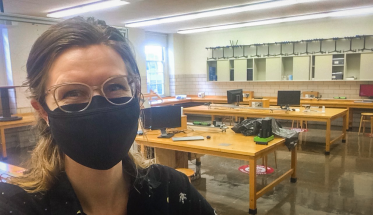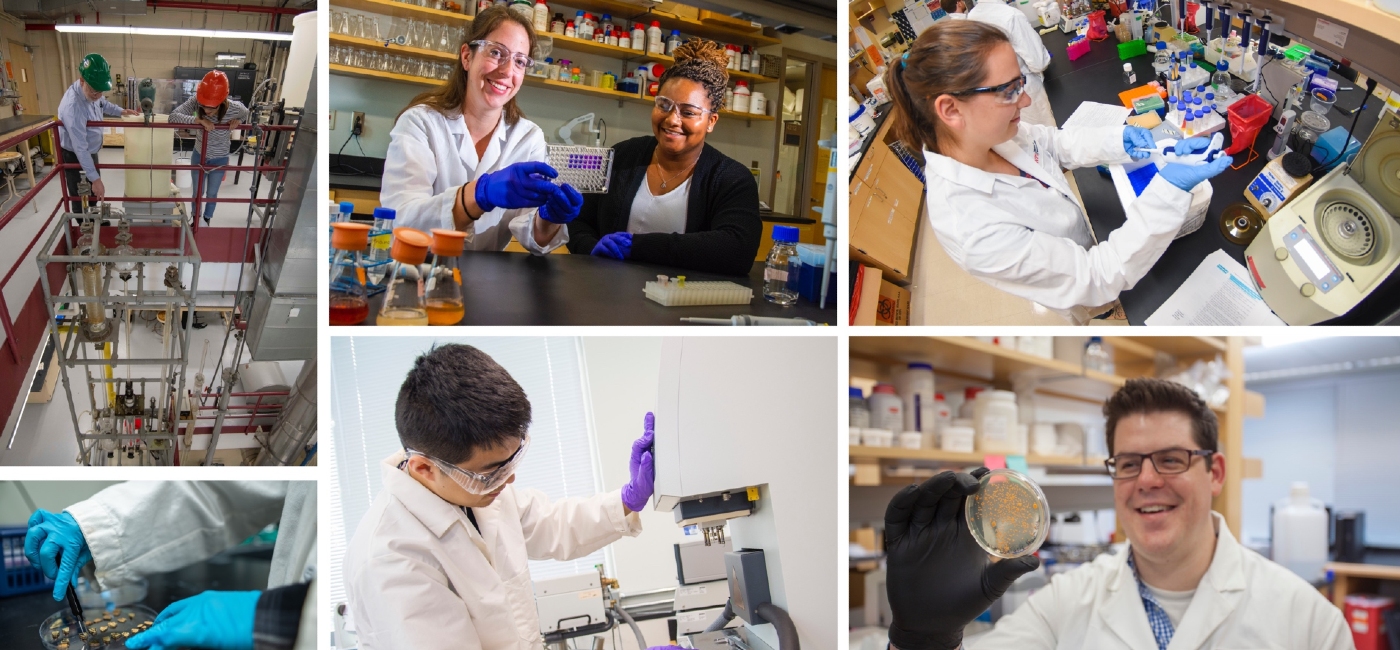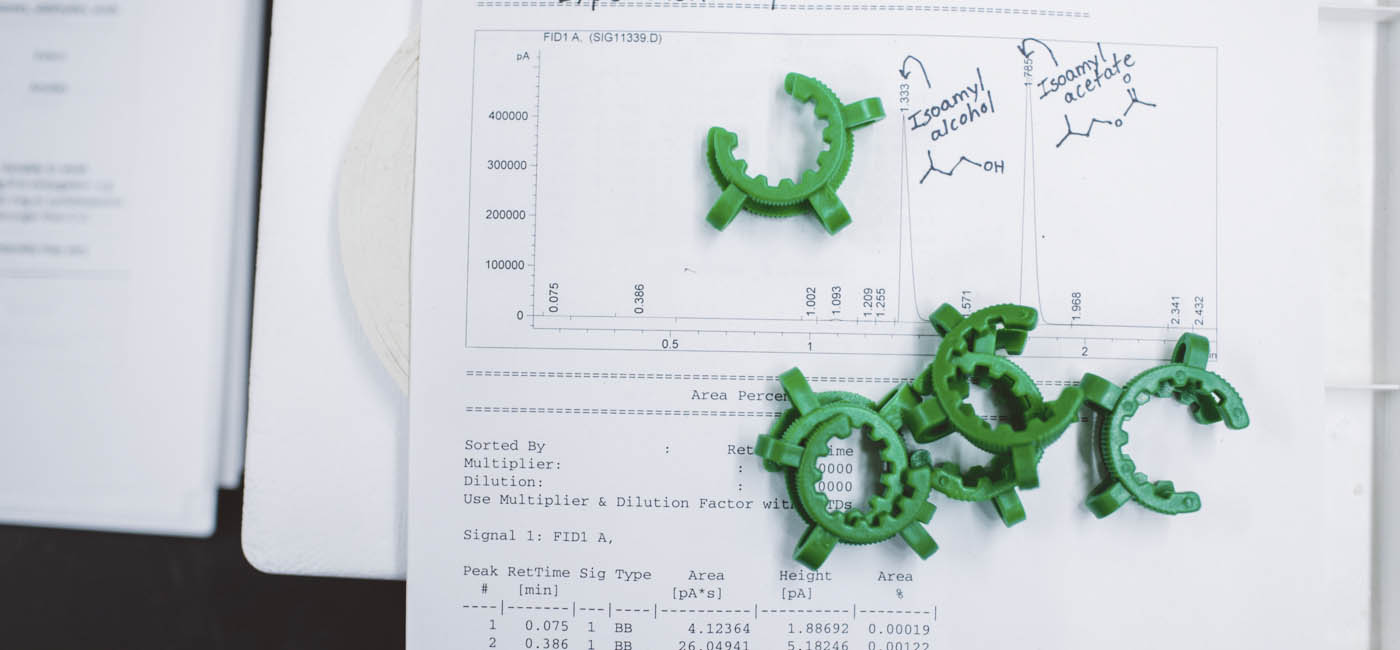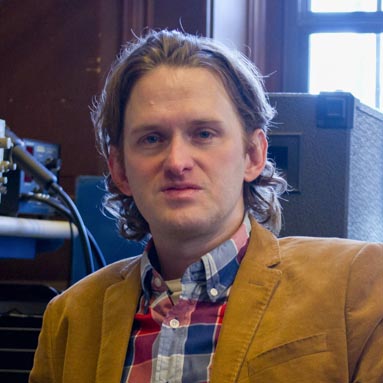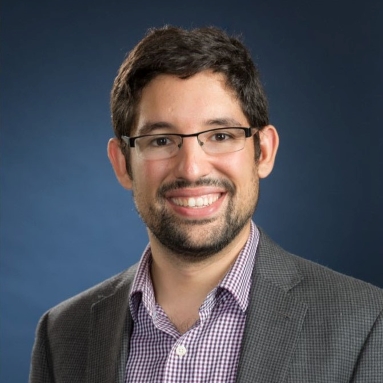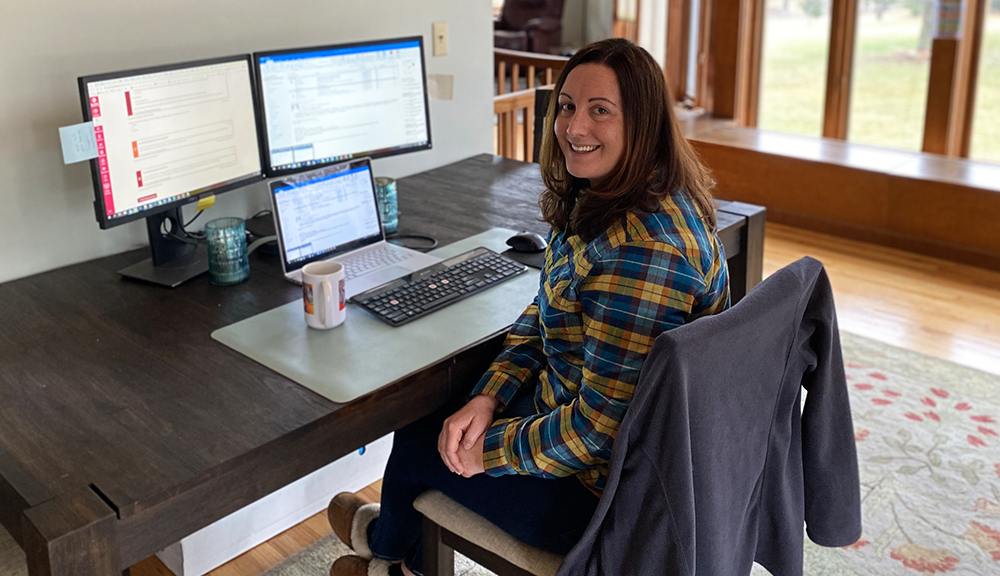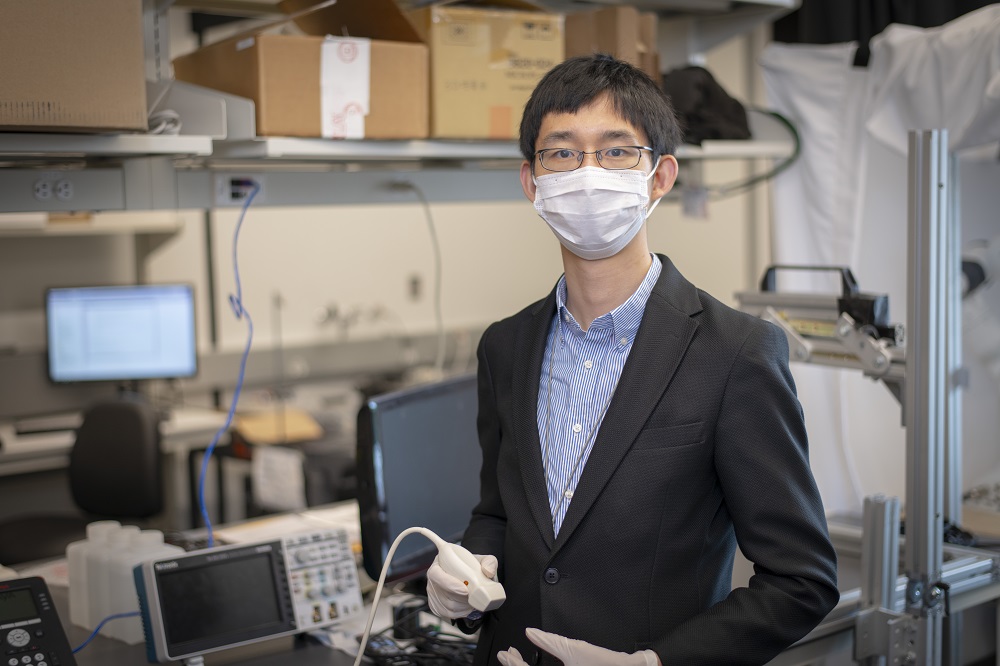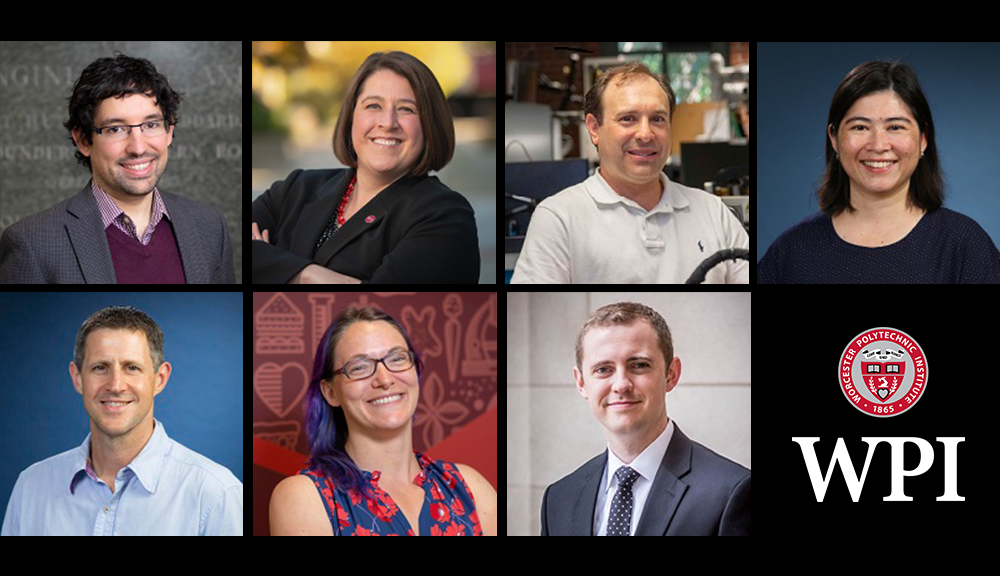With WPI working hard to keep the university community safe during the pandemic, professors and lab managers have had to get creative to prepare students to do lab work remotely—rethinking experiments, using household items, 3D printing robotic parts, and even engaging augmented reality.
Basically, they’ve "gone all MacGyver" to design educational lab experiences in the time of COVID.
“We needed to figure out how our labs can work remotely for every student without losing any quality of our education,” says Kevin Harrington ’09, Robotics Lab manager, who earned his degree in WPI’s first robotics engineering class. “We develop our labs so the technologies used and what the students are learning are at the leading edge of what’s available in the world. We had to make sure that didn’t change, no matter where our students were doing their lab work.”
Some students are on campus and able to do their lab work in WPI’s state-of-the-art facilities, while others are working from home. Still others who are on campus are doing some of their labs in their residence hall rooms to help de-densify labs in accordance with state, federal, and university COVID guidelines.
“We had to think about how to maintain a high level of engagement and find a way to stimulate the students and help them make those educational connections,” says Andrew Teixeira, assistant professor of chemical engineering, who teaches a lab course for seniors in both A- and B-Terms. “We had to innovate. We had to rethink everything. We wanted students to feel like they were still right in the middle of an experiment, taking measurements and figuring out what knobs and dials to turn.”
To give students the feeling of doing actual experiments in the lab, Teixeira is using augmented reality (AR), a technology that offers the user an interactive experience by superimposing information like sounds, images, video, and text on the world they see. High-definition cameras have been set up in the labs, and students who are physically in the lab wear AR goggles connected with software that sends live-feed screen sharing to remote students, allowing them to monitor temperatures, record data, review the current state of the equipment, and call for changes in how the equipment is controlled—as if they also were in the lab.
Teixeira came up with the idea after reading a paper Robert E. Dempski, associate professor of Chemistry & Biochemistry, wrote about using the technology in lab situations. Teixeira took that idea and put it into action. Moving ahead, the two professors are working together to adapt these ideas for pharmaceutical engineering classes.
“There were bugs to work out at the beginning, but the students have been excited about being so engaged even when they’re remote,” Teixeira says. “I’ve been impressed with the students and how they’ve seized this as an opportunity to learn in a new way.”
The concept is working so well Teixeira has given talks on its implementation to people in several departments on campus as others look to adopt similar technology.
Being Creative with Resources
L. Dana, Lab Manager for the Physics Department, had to figure out how to teach remote labs for two A-Term classes to about 700 students; about 140 were doing the lab work remotely, and the rest were staggering their lab time in order to de-densify the lab space. Dana joined WPI in May from MIT’s Advanced Teaching Lab and has had only a few months to develop her labs and test them.
She wanted to keep the remote work as close as possible to in-person without asking students to buy anything extra. She didn’t even want them going out to stores—a risk during the pandemic—so she had them use things they’d generally have in their own homes or residence hall rooms, like a laptop, rulers, smartphones, an ID card, and even tennis balls.
“We wanted students to be more creative with limited resources—more MacGyver,” she says. “We had them taking videos of themselves dropping balls in their dorm room to measure acceleration at the speed of gravity. The tools we were using were simple, but it taught them about calculating uncertainty in your measurements and why calibration is important. It translated super well.”
Bridget Slocum, a first-year student from Westwood, Mass., who, like many students, alternated between in-person and remote lab work, says Dana’s ball experiment “was significantly harder to do remotely, but she made it feel normal, doable. It took a little more figuring out, but Dana recorded a video on how to do the experiment and the coding,” she notes. “And I could reach out to my friends so we could help each other like we would in the lab.”
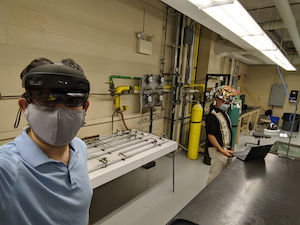
Scott Barton, associate professor of Humanities & Arts, supplied all of his students—those learning remotely and on-campus—with the essential parts, like motors, a microcontroller, and a breadboard, they would need to build robots that can create music for his course "Making Music with Machines." With the tools in hand, they could work on their projects in their residence halls, in their homes, or in his lab.
“I wanted even the students on campus to have the lab kits I made so their work would be more fluid,” Barton says. “The kits are small and modular enough that students can use them in their bedrooms. I think they’ve appreciated the opportunity to not have to be in a specific lab. No matter where they are, they’re designing their own instruments, writing their own code, and putting it all together. And they still help each other like they would in person—only now they’re helping each other over Zoom calls.”
Bryce Bragdon ’23, an aerospace engineering major, did all his work from his family’s home in Windsor, Maine, with a lab kit that Barton had mailed him.
“I went into this knowing what was going on with the pandemic. I was hoping the teachers were going to make it work and I think they did,” he says. “It was definitely just as good as being in the lab. It was difficult, but I gained something. It made me have to think more for myself. There was that tradeoff.”
-- By Sharon Gaudin
